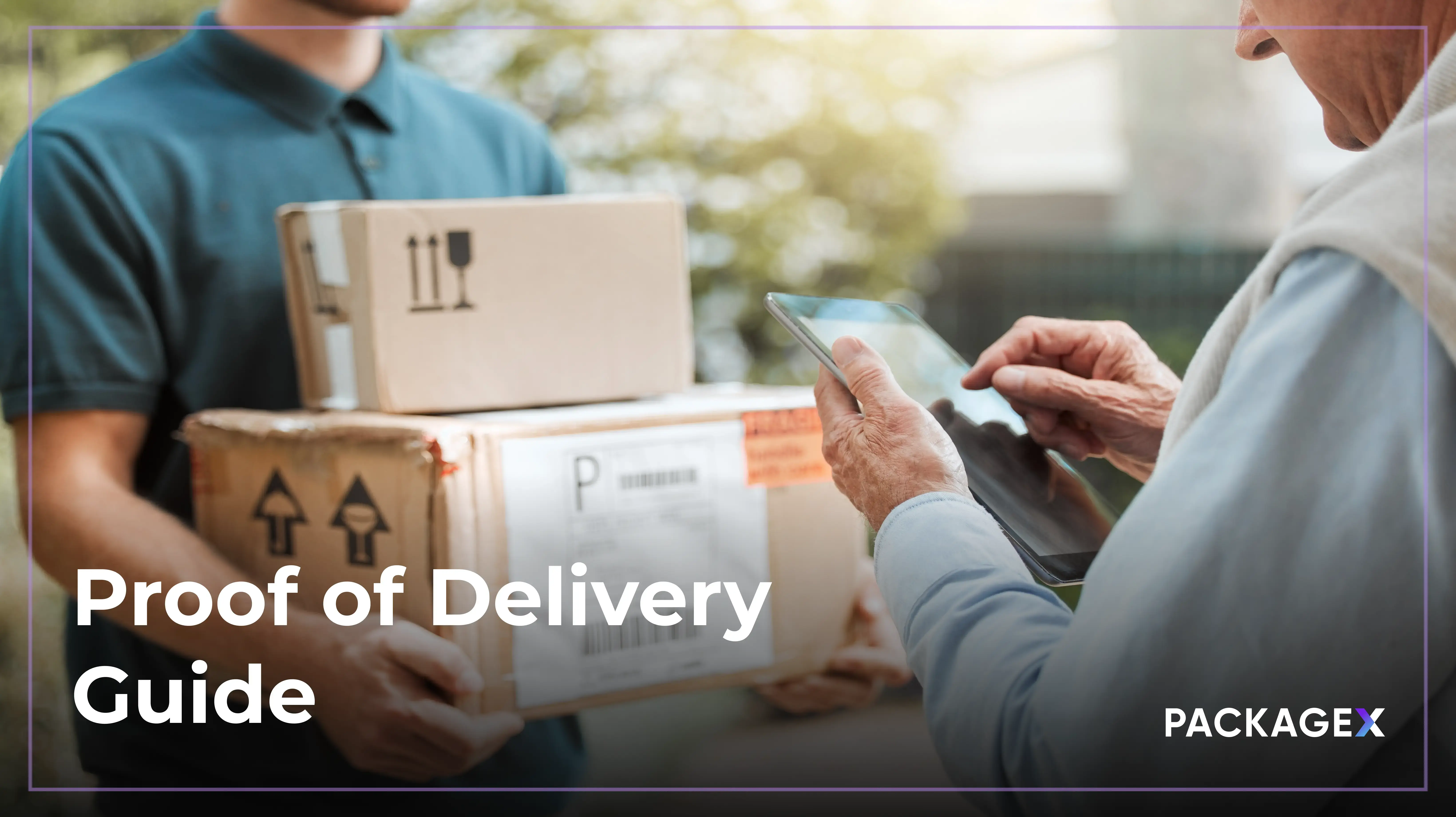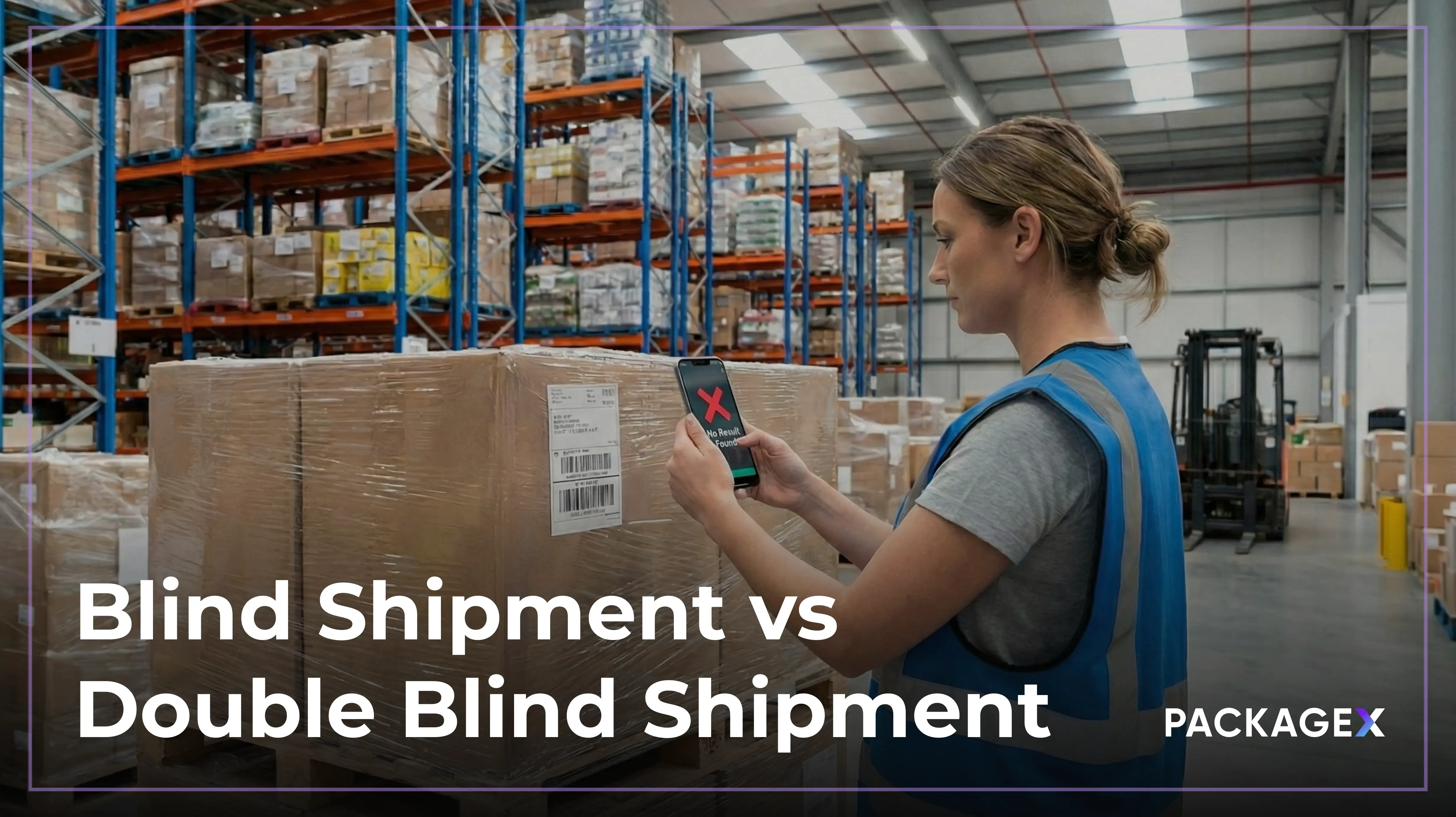We’ve all been impacted by the incredible amount of growth and change we’ve seen across the entire eCommerce industry over the last few decades. From the top down, goals and priorities have shifted over time, and increasingly, the art and science of order fulfillment and nailing the post-purchase experience for the shopper have become focus areas. Across the eCommerce fulfillment journey, leading retail brands are facing a broad range of challenges that come along with this growth, including managing and tracking large amounts of inventory, providing timely and accurate delivery of orders, and improving relationships with shoppers. Most retailers have multiple fulfillment centers and partners involved in the fulfillment process, leading to coordination challenges and potential delays.
Shoppers also have more choices than ever and require a more personalized shopping experience, whether online or in-store. The growth of eCommerce coupled with increasing shopper expectations means there’s extra pressure on retailers to push the boundaries on what fulfillment means and delivers. This has led to several new strategies and opportunities across the fulfillment operations landscape that are redefining the last mile and reshaping how retailers fulfill orders. In this article, we’re diving into each of these emerging strategies.
What Is Retail Fulfillment?
Receiving orders, processing them, and ensuring that the products have reached the shoppers are all part of retail order fulfillment. This process can be complex and requires careful coordination between retailers, suppliers and transportation companies.
All individuals associated with or responsible for retail fulfillment already know this is a critical part of the retail supply chain. It determines the shopper's experience and can make or break their sentiment toward a brand and, ultimately, brand loyalty. If executed correctly, order fulfillment can give a business a major competitive advantage and help it win market share. Additionally, there’s an enormous opportunity to reduce inventory costs, maximize space usage and save money by optimizing order fulfillment.
The Importance of Retail Fulfillment
eCommerce businesses prioritize optimizing retail fulfillment because it significantly impacts profits and shopper satisfaction. There are several ways that order fulfillment can bolster shopper satisfaction, including reducing delivery times, providing accurate order tracking, meeting delivery SLAs and offering hassle-free returns. If an eCommerce merchant or a retailer fails to deliver an order on time, shoppers will find another merchant who can. Therefore, a successful order fulfillment approach is crucial for a business to increase shopper satisfaction, reduce costs, improve profit margins and increase shopper loyalty.
What Are the Most Common Retail Order Fulfillment Challenges?
Today's retail environment is more complex and competitive than ever before. Consumer preferences have evolved during the pandemic, demanding more convenience and control over digital transactions and order fulfillment. However, many retailers struggle with common fulfillment challenges that hinder their ability to meet shoppers’ expectations. Some common challenges include:
Growing order volume – As online shopping continues to grow, retailers see an increasing number of orders. As per the data shared by Adobe Analytics, online shopping in the U.S. generated a record high of $9.12 billion on Black Friday in 2022, 2.3% higher than in 2021. While this is good for business, it can also be a challenge for fulfillment teams, who may not be able to keep up with the volume. This can lead to delays in fulfilling orders and, ultimately, a poor shopper experience.
Inefficient manual processes – Too many retailers still rely on manual processes to get orders out the door. As the order volume continues to soar, it becomes difficult for retailers to process orders manually in a timely and accurate manner. This can lead to errors and inefficiencies that cost time and money.
Lack of visibility – 61% of retailers surveyed have mentioned lack of real-time visibility once the order is out for delivery as one of their topmost challenges. Retailers, eCommerce merchants and order fulfillment leaders know how important it is to track orders from the moment they are placed until they are delivered to the shopper. Without visibility, businesses cannot ensure that orders are fulfilled on time and as promised. This disconnect limits retailers’ ability to expand order fulfillment operations and promote inventory management.
How Can Businesses Improve Retail Fulfillment?
The ever-changing landscape of the retail industry has made it clear that retailers need to be agile to stay ahead of the curve and grow their businesses. It requires them to reshape their fulfillment process that aligns with the emerging trends and leverages automation, data and visibility. This approach will help them enhance the shopper experience - the holy grail of retail. Below are some key strategies to help retailers and eCommerce merchants improve order fulfillment operations.
1. Sustainable fulfillment services
The need for sustainable fulfillment centers is on the rise. Shoppers are becoming more conscious of their purchases' environmental impact and are willing to pay the cost of eco-friendly shipping. Sustainable fulfillment not only satisfies the shoppers, but also reduces retail fulfillment costs. For this purpose, retailers should shift to offer green logistics and fulfillment options which include:
- Picking up at the store vs. shipping
- 5-day shipping vs. same-day delivery
- Use of zero-emission delivery vehicles like autonomous cars and drones
- Eco-friendly packaging materials
As the retail industry continues to move towards sustainability, sustainable fulfillment will likely become the new norm.
2. Localized fulfillment centers
Localizing fulfillment is another strategy that can improve how retailers fulfill orders, especially when it comes to the "last mile" of delivery. This fulfillment model helps retailers save costs, reduce their carbon footprint and offer shoppers the fast turnaround that they expect. Here are three fulfillment strategies retailers should consider adopting:
Click-and-collect: This is becoming a popular fulfillment option where shoppers can order online and pick up in-store. Click-and-collect can save retailers money on shipping costs and shoppers' delivery time.
Engaging micro-fulfillment centers: Some stores are turning into micro-fulfillment centers to keep up with the increasing shopper demand. They're stocking more inventory and hiring staff to pack and ship orders.
Utilizing dark stores or local warehouses: Another trend on the rise is dark stores or local warehouses, which allow retailers to localize their inventory. These warehouses store inventory closer to shoppers, which can help speed up delivery times. Plus, it gives retailers more flexibility to offer same-day or next-day delivery.
3. Omnichannel retail fulfillment
Another model that can improve retail order fulfillment is omnichannel fulfillment. This strategy allows shoppers to shop how they want, when they want, and receive their purchases however they want. For example, buy online but pick up in-store or even curbside. This means that retailers must be able to provide a smooth shopping experience to their shoppers across all channels. For this purpose, sales and fulfillment channels should intersect seamlessly, which is only possible if a retailer’s inventory management system is connected to all the channels and updates in real-time to stay responsive.
4. Work with multiple carriers
Retailers can overcome surges in consumer demand and scale their capacity by working with multiple carriers. There are a few reasons why retailers should turn to multiple carriers to handle their last-mile delivery needs. First, it allows them to offer their shoppers a wider range of shipping options. Second, it gives them more flexibility and savings options in terms of pricing and delivery times.
5. Careful consideration of fulfillment center locations
The location of the fulfillment center plays a critical role in improving the shopper experience. If a retailer or fulfillment expert is looking for ways to do it better, they should consider choosing a strategic location near their shoppers. It will ensure that orders are delivered on time and shipping costs are optimized.
6. Investment in an integrated inventory & fulfillment software
Another critical step that can overhaul traditional retail fulfillment is bringing on technology that is enabled for connected logistics. Retailers should consider a modern and integrated inventory and fulfillment software that eliminates manual processes, provides visibility into inventory levels, takes care of order tracking and aids in processing the increasing package volume. Look for one that makes getting started and integration with existing tech easier through a robust API-first offering.
7. Specific-day delivery over the speediest shipping
As the competition on hyper-fast shipping shifts into low gear, retailers should turn to specific-day delivery over the speediest shipping. It is a sustainable shipping method that shoppers prefer nowadays and reduces shipping costs. Online shoppers are willing to wait for their deliveries, but only if they know when to expect them and have end-to-end visibility.
8. Consider third-party logistics (3PL) support
Retailers should consider 3PL support to improve retail order fulfillment, as these partners offer various services that simplify inventory management and reduce shipping costs. Third-party logistics partners can handle end-to-end order fulfillment for retailers and eCommerce sellers, including inventory management in warehouses, receiving and packing orders, and shipping them to a shopper's doorstep. Some major benefits of considering 3PL support include:
- Collaborating with a 3PL partner with strategically located distribution centers. As shoppers nowadays are more concerned about delivery timelines and shipping costs, this strategy provides businesses with competitive delivery and cost options.
- Offering bulk shipping rates via a 3PL partner to achieve stable shipping costs.
- Effectively scaling labor and space resources according to business inventory management needs.
{{returns-webinar}}
Retail Fulfillment: Optimized With PackageX
One of the simplest ways to adopt the above strategies and get ahead as a retailer is to adopt a platform that can enable a modernized approach to fulfillment, capable of delighting every shopper. PackageX simplifies and streamlines order fulfillment for eCommerce businesses and retailers by offering a suite of user-friendly mobile and desktop logistics apps and developer-friendly APIs. These apps and APIs digitize and connect inventory, fulfillment, shipping, and receiving operations on a unified platform, making eCommerce order fulfillment easier. Considering the rise in online shopping and order volume, retailers must move away from manual procedures and opt for solutions such as the PackageX modern logistics platform that automates order fulfillment operations.
Here's how PackageX can help:
PackageX Inventory – The Inventory app not only keeps track of inventory in real-time but also combines fulfillment and shipping software to streamline logistics workflows at any site where order fulfillment occurs. Users can create digital manifests, perform manifest matching, manage items in the store or warehouse, and execute fulfillment operations, including picking, packing, and shipping orders, cost-effectively.
PackageX Ship – The shipping app and API enable retailers to generate shipping labels within seconds based on the package type, shipping speed, and rates. Users get access to 100+ national carriers and local delivery service providers with discounted shipping rates. This way, retailers can choose the best shipping provider and have more control over their shipping costs. Additionally, the orders dispatched for delivery can be tracked using the PackageX shipping app, and recipients can be notified about their delivery based on location.
If simplified, cost-saving logistics capabilities are something you are looking for, schedule a demo today and see how PackageX can transform order fulfillment in your business.




